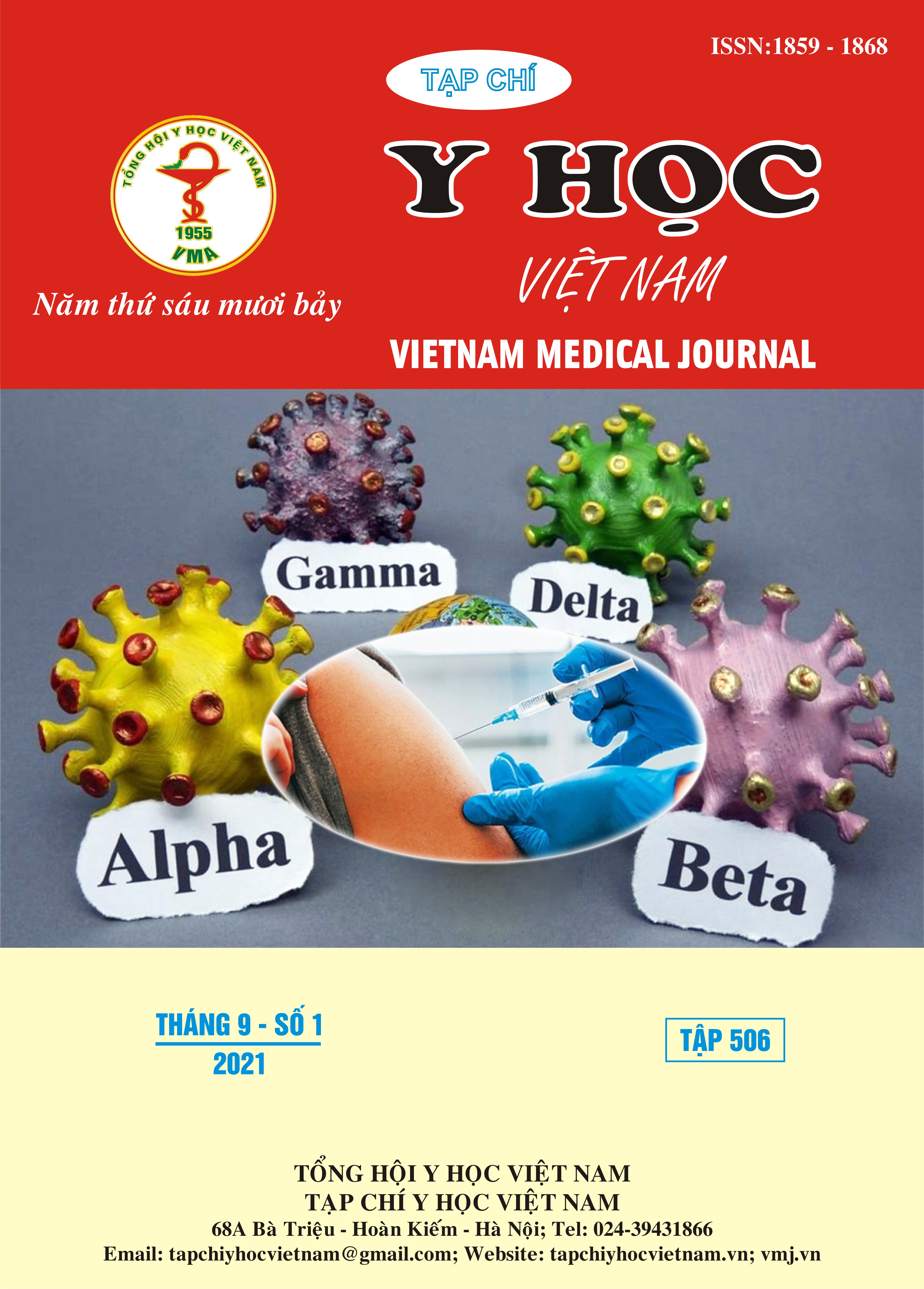VALUE OF CENTRAL VENOUS OXYGEN SATURATION TO DETECT WEANING FAILUREIN SEVERE ACUTE MYOCARDIAL INFRACTIONWHO MUST INVASIVE MECHANICAL VENTILATION
Main Article Content
Abstract
Objectives: To evaluate the ability of central venous oxygen saturation (ScvO2) to detect weaningfailure(WF) in severe acute myocardial infraction(MI) who must invasive mechanical ventilation (MV) >72 hours. Methods: prospective observational study was conducted at cardiac intensive care unit C1 Bach Mai Hospital in severe MI needed mechanical ventilation >72 hours,fulfilling of the weaning criteria and have the clinical decision for spontaneous breathing trial (SBT). We collected the clinical, subclinical information and 2 samples of central venous blood gas before the SBT (T1) and 30th min of SBT(T2). Result: Twenty five patients were enrolled in the study, there were fourteensuccessful weaning patients and eleven failed weaning patients. At the T2, ScvO2 decreased significantly while the heart increased significantly between two group (69.87±3.9% vs 63.84±6.54%; p=0.009; 103.5(99.5-107) vs 111.0(106-113); p=0.008). In our study, a reduction of ScvO2 by >4.5% between before and the 30th min of SBT can predict weaning failure with sensivity 72.7%, Specificity 85.7% and odds ratio 16 (confidence interval= 2.165 – 118.27,p=0.005). Conclusion: reduction of ScvO2 between before and the 30th min of SBT can predictability in weaning failure detection in severe myocardial infraction who needs invasive mechanical ventilation.
Article Details
Keywords
ScvO2, Myocardial infraction, Mechanical ventilation
References
2. Alviar, C. L.; Miller, P. E.; McAreavey, D.; Katz, J. N.; Lee, B.; Moriyama, B.; Soble, J.; van Diepen, S.; Solomon, M. A.; Morrow, D. A. Positive Pressure Ventilation in the Cardiac Intensive Care Unit. J. Am. Coll. Cardiol.2018, 72 (13), 1532–1553.
3. Boles, J.-M.; Bion, J.; Connors, A.; Herridge, M.; Marsh, B.; Melot, C.; Pearl, R.; Silverman, H.; Stanchina, M.; Vieillard-Baron, A.; Welte, T. Weaning from Mechanical Ventilation. Eur. Respir. J.2007, 29 (5), 1033–1056.
4. Vignon, P. Cardiovascular Failure and Weaning. Ann. Transl. Med.2018, 6 (18), 354–354.
5. Teixeira, C.; da Silva, N. B.; Savi, A.; Vieira, S. R. R.; Nasi, L. A.; Friedman, G.; Oliveira, R. P.; Cremonese, R. V.; Tonietto, T. F.; Bressel, M. A. B.; Maccari, J. G.; Wickert, R.; Borges, L. G. Central Venous Saturation Is a Predictor of Reintubation in Difficult-to-Wean Patients. Crit. Care Med.2010, 38 (2), 491–496.
6. Walley, K. R. Use of Central Venous Oxygen Saturation to Guide Therapy. Am. J. Respir. Crit. Care Med.2011, 184 (5), 514–520.
7. Jubran, A.; Mathru, M.; Dries, D.; Tobin, M. J. Continuous Recordings of Mixed Venous Oxygen Saturation during Weaning from Mechanical Ventilation and the Ramifications Thereof. Am. J. Respir. Crit. Care Med.1998, 158 (6), 1763–1769.
8. MacIntyre, N. R.; Cook, D. J.; Ely, E. W.; Epstein, S. K.; Fink, J. B.; Heffner, J. E.; Hess, D.; Hubmayer, R. D.; Scheinhorn, D. J.; American College of Chest Physicians; American Association for Respiratory Care; American College of Critical Care Medicine. Evidence-Based Guidelines for Weaning and Discontinuing Ventilatory Support: A Collective Task Force Facilitated by the American College of Chest Physicians; the American Association for Respiratory Care; and the American College of Critical Care Medicine. Chest2001, 120 (6 Suppl), 375S-95S.
9. Liu, J.; Shen, F.; Teboul, J.-L.; Anguel, N.; Beurton, A.; Bezaz, N.; Richard, C.; Monnet, X. Cardiac Dysfunction Induced by Weaning from Mechanical Ventilation: Incidence, Risk Factors, and Effects of Fluid Removal. Crit. Care2016, 20 (1)


